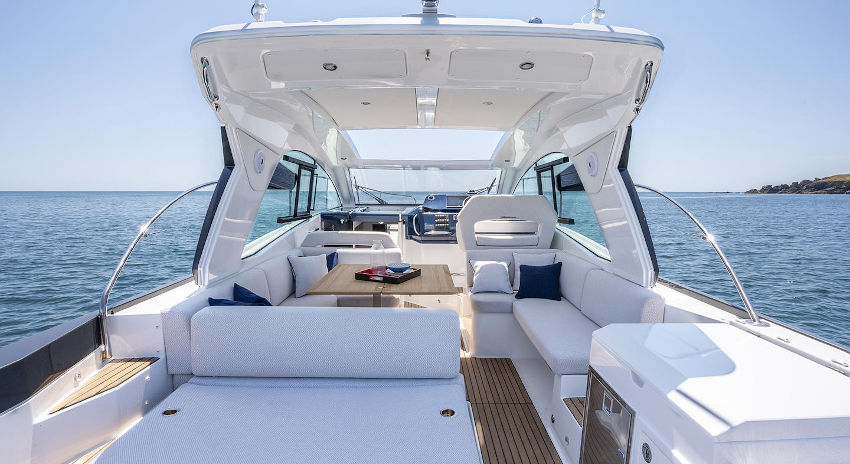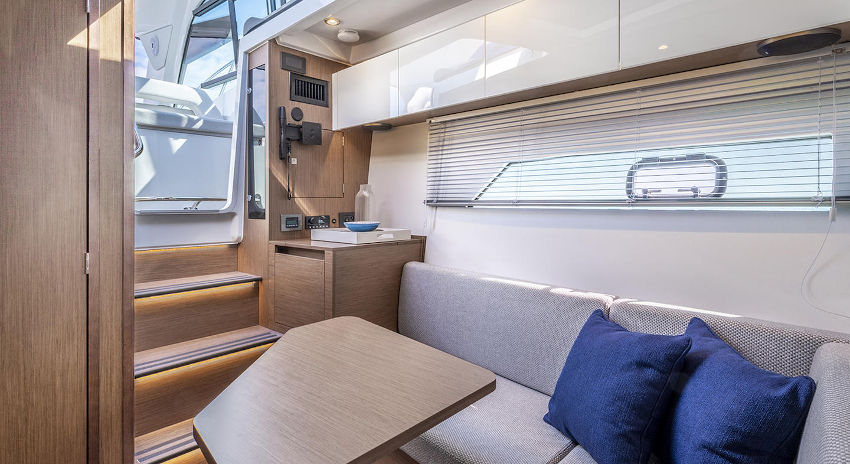Displaying items by tag: GT36
Instant Thrills With Beneteau’s New Gran Turismo 36
It will come as no surprise that Beneteau are leading the way in terms of new models for 2021 — and the new Gran Turismo 36, the latest and hugely exciting addition to the Gran Turismo range, is no exception.
With powerful looks and bold lines, the GT36 is the first in her class to combine the kind of handling you would normally expect with a pure sports boat in combination with comfortable cruising and space for leisure.
Features to make the most of open-air boating include an aerodynamic hardtop with sliding roof, and a semi-recessed sunpad protected by a generous awning on the foredeck.

The interior is bathed in natural light thanks to large hull windows and deck hatches, making for a bright canvas on which to put your individual stamp.

But what is particularly special about this 37ft model is that you can choose between inboard diesel or outboard propulsion, both of which will offer exceptional performance and ease of handling, like all GT models.
This follows the huge increase in outboard engines as the propulsion of choice in the Irish market, as observed by Beneteau’s Irish dealer BJ Marine.
Like the GT40 — of which BJ Marine have a new stock boat ready immediately — the GT36 will have a huge cockpit, ideal for days afloat with family and friends. And the interior lends itself to trips further afield and overnighting aboard.
“We have crossed the Irish Sea between our Greystones and Pwllheli offices many times in the GT models that we have sold to date, and look forward to doing so in this new model,” says BJ Marine group manager James Kirwan.
“This boat was designed to be used and boating has never been such a suitable and safe pastime.”
The Beneteau website has more details on the Gran Turismo 36, including a virtual tour. Contact BJ Marine at +353 1 287 8334 (or +44 1758-612686 in the UK) to book a test sail.





























































